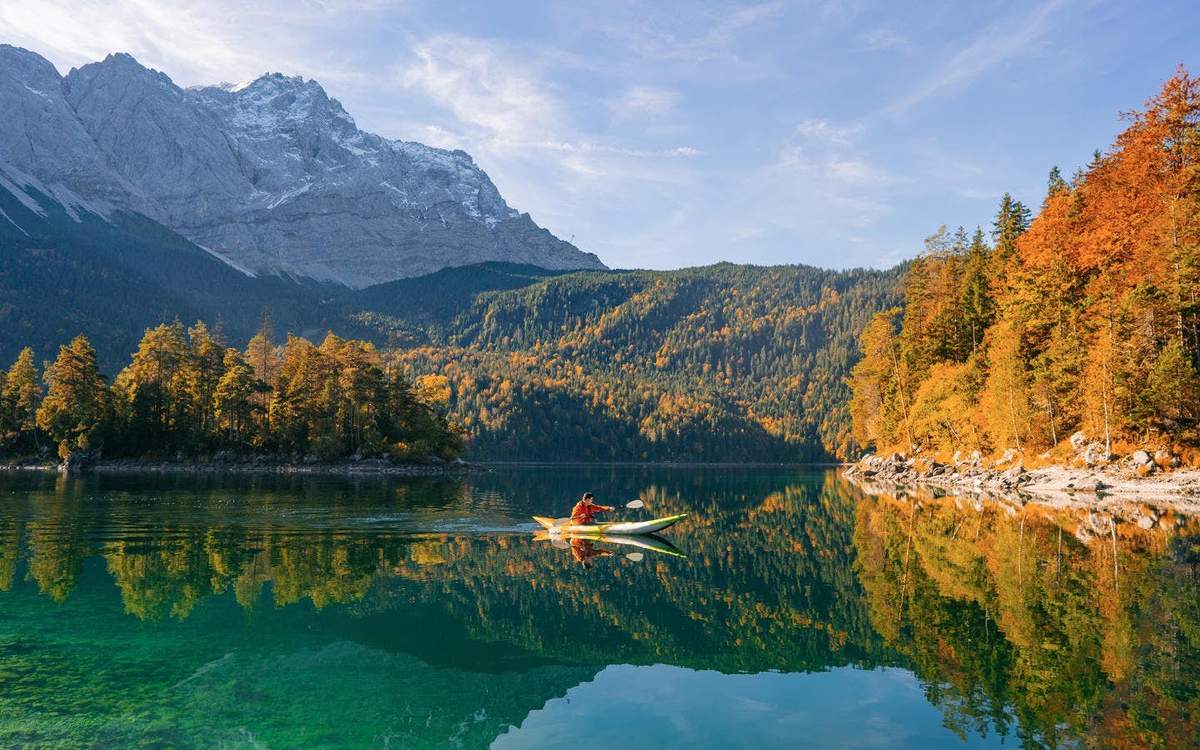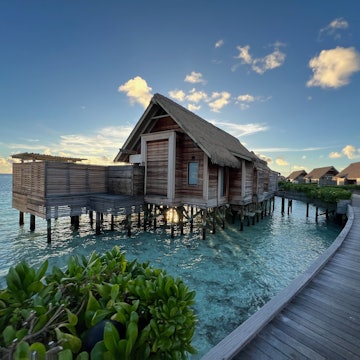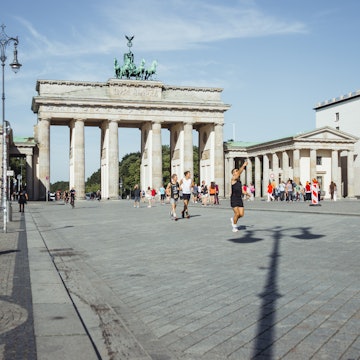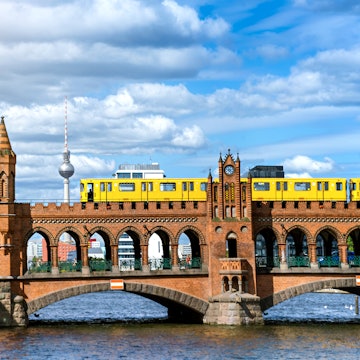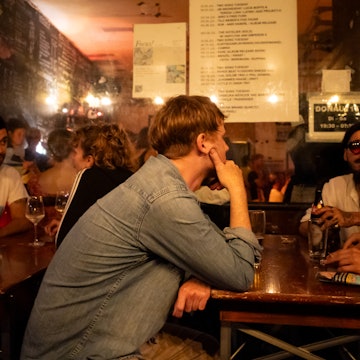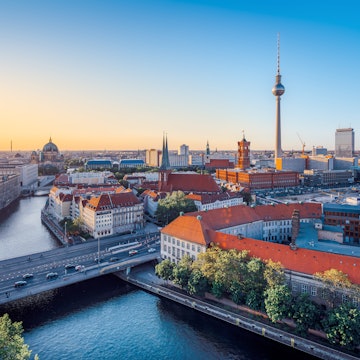
How Berlin’s powerful history helps modern-day refugees tell their stories
Nov 19, 2020 • 5 min read

A 2015 mural in Berlin depicts a refugee family © Radiokafka / Shutterstock
I was just 19 years old when I first arrived in Berlin from the UK with high expectations and lots of hopes. First impressions underwhelmed me – I saw impressive buildings and interesting exhibitions, but the city failed to capture my imagination. That changed when I took a four-hour walking tour on my second day. Suddenly the streets came alive with stories, fascinating anecdotes and intricate histories. I found myself falling in love with this complex city and by the end of the tour I was sure of two things: I wanted to live in Berlin and I wanted to be a tour guide!

Fast-forward three years and I had achieved one of my goals. I was living in Berlin and, in between working low paid jobs, I scoured the city’s streets learning more about it at every turn, which helped me in my quest to achieve my second goal of becoming a tour guide.
As a Berlin expert, I was able to turn my experiences into helping others understand the fascinating and powerful history of the city. I saw how my guided tours were having a similar impact on tourists, just as the first walking tour I had taken four years earlier had had on me. It was so fulfilling to see people gain a greater understanding of the rise and consequences of fascism, the fragility of democracy and the crushing effects closed borders can have.
Juxtaposed against my stories of Berlin’s past, I was also experiencing life in modern Berlin, a sometimes harsh city with new stories to tell. On a square not far from where I lived, refugees seeking their human rights established a protest camp consisting of tents. At that time the situation of refugees was dire: they lived in camps, unable to move freely, study or work. I started a cooking project with the people I met in the protest camp in Oranienplatz. We cooked once a week, sharing stories and building a community around food.

The stories of the people I met there struck me as they were often reminiscent of the stories I was telling on my guided tours of the city. Throughout its history, the citizens of Berlin have lived through similar hardships and here were people finding refuge in the very streets where war and persecution had taken so many lives.
In 2014, the protest camp at Oranienplatz, along with a nearby occupied school, was forcefully evicted in a dramatic police operation that saw the whole area locked down. Local people protested against the eviction and it was one of the most profound things I had ever witnessed.
Just days later Oranienplatz was just like any other square in Berlin, with new grass laid and all traces of the community who had lived there erased. It struck me how quickly a city’s stories can be lost, how easy it is to change the narrative of a neighborhood by simply giving it a quick makeover. I wondered who would remember the story of the Oranienplatz movement in years to come.
By 2015, the refugee crisis was headline news and all eyes were on Germany. Tourists on my tours were asking questions and I felt that I, as a westerner with no lived experience as a refugee, should not be the one to tell their stories. When I asked my friends from the Oranienplatz movement about turning their stories into a walking tour, they were initially unsure and couldn’t understand why tourists would be interested in what they had to say.
But I insisted that people would want to hear why they had protested and the impact it had on Berlin. It took actually organizing a tour to convince them. The guides, from Sudan and Somalia, finally understood what I meant.
People were enthralled as they talked about why they had left their home countries, how they crossed a dangerous sea to reach Europe and why they ended up in Berlin seeking basic human rights. What was striking about the tour’s audience was that it was not just the tourists who turned up – Berliners also joined us wanting to learn more about what had happened.
It was an interesting paradox to see a walking tour attended by people born in Berlin and people visiting Berlin being led by people forced to travel to Berlin to survive. It was powerful to see people who were being discussed every day in the media taking control of their own narrative.
The walking tour format allowed for casual conversation, which allowed people to ask uncomfortable questions. This simple walking tour became a way to fight against ignorance and promote informed discussions. This is how Refugee Voices Tours was born.
My Syrian friends saw the opportunity to create their own tour to explain what was happening in Syria. They felt their stories had been hijacked by the media and the concentration was on how people were arriving in Europe rather than why they were fleeing their own country.
There were many similarities between what had happened historically in Berlin and what was happening now in Syria, so we created a walking tour that drew these parallels while informing people about the roots of the Syrian revolution and what it meant to be a refugee in a city with its own troubled past.

The stories told by our guides are often hard to hear, but with Berlin as a backdrop they also reflect a hope that cities can go through extremely turbulent times and bounce back to eventually become a safe haven for others. When I ask our guides where they see themselves in the future, they say that they hope one day to be giving walking tours in a free and peaceful Syria, explaining the history of the revolution, the war and their own displacement.
Many people see walking tours as just another thing to check off their list when visiting a new city. For me they are one of the most powerful storytelling platforms I know of. A city’s streets and its ordinary citizens have so much to share. In the year of the pandemic, few people can travel, but the great thing about walking tours is that you don’t need to get on a plane to learn something new. You don’t need a change of scenery to change your perspective. Your own streets are full of stories just waiting to be told.
You might also like:
Eat well, do good: 10 restaurants improving the lives of refugees
Former child refugee retraces the steps she made to the UK 28 years ago
Refugee and immigrant guides bring exhibits to life at Philadelphia’s Penn Museum





